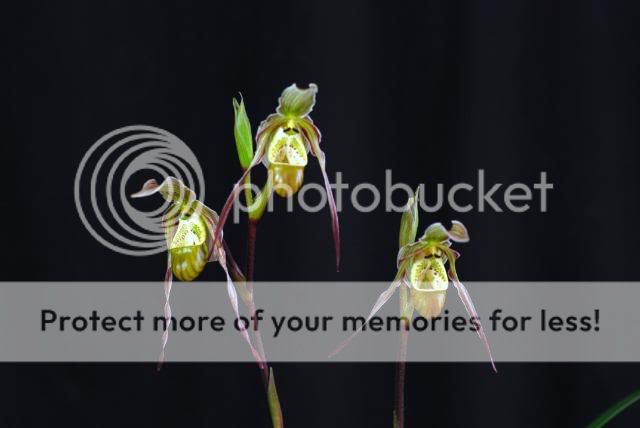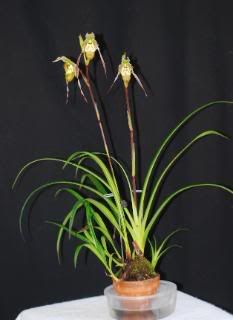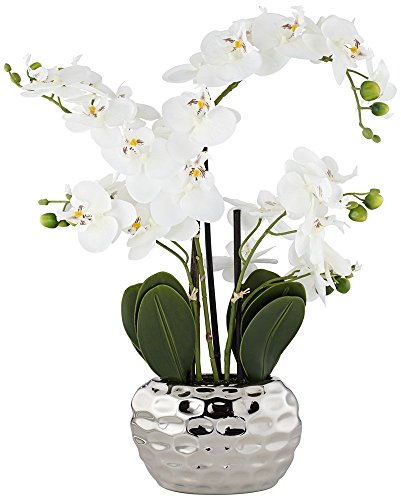Very nice growing Rose.

For what it is worth, the narrow sedge like leaf configuration is thought to be an adaptation to HIGH light, much as the terete configuration in Vandas and Brassavola. Anytime you see this in a Phrag assume it wants light brighter than what you would give a Cattleya. However, remember the habitat is usually an open area, among the grasses, on cliffs or slopes with running water either in the mosses or nearby. So the roots are cool. The crown (rhizome) and roots of these plants are in the shade of the grasses and mosses. So give them sun but keep the roots cool. How? One trick is to make sure the pot is shaded by surrounding pots, but the leaves are in the sun. Another is to set the pot the Phrag is in, into an empty clay pot that is at least one inch taller and wider than the phrag's pot. The empty air space will keep the pot shaded and insulated from the heat of direct sun. Also if you set this whole configuration in a shallow tray of water, the water wicking into the clay pot will cool by evaporation. This trick is really helpful, so I have been repeating it in various appropriate threads. (don't mean to beat a dead horse :viking

There are other ways to skin this cat, including having more air circulation, but keep the goal in mind, leaves in sun, and roots no warmer than ambient air temps. Rose, the way you have your plant likely the clay pot is keeping the roots cool enough that it is quite happy, as demonstrated by the new growths and abundant flowers.
Last, in taxonomy color is the least important of traits for determining a species. Dark or light colors are trivial. (in horticulture that is different, we all want either the very dark colorful one, or the albino :evil

The staminode on Rose's plant seems to agree more with ecuadorense than caricinum.
The size of Rose's plant is a bit larger than a 'classic' ecuadorense, but I would need to see it in person to really know one way or the other. Rose, I think you should keep your label as it is. Maybe have me or Ernie look at it if you bring it in to the IOS show the weekend of March 21. If it is not ecuadorense, it might be pearcei, but those 'bushy' eyebrows are classic ecuadorense. And I have seen a lot of them over the years.
Nice growing and well flowered.
Leo














































